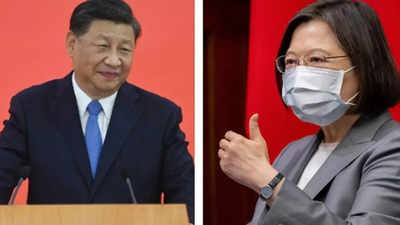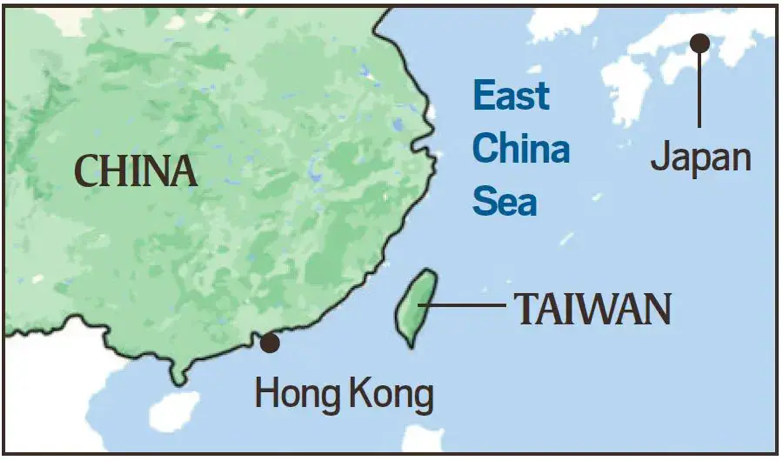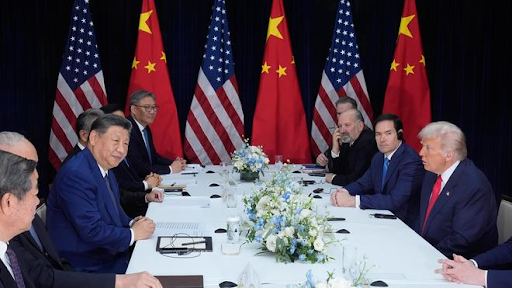|
TIMELINE
- October 1949: Mao Zedong's communists take power in Beijing after defeating Chiang Kai-shek's Kuomintang (KMT) nationalists in a civil war. The KMT flee to the island of Taiwan and form their own government in Taipei in December, cutting off contacts with mainland China.
- In 1950, Taiwan becomes an ally of the United States, which is at war with communist China in Korea. The US deploys a fleet in the Taiwan Strait to protect its ally from possible attack.
- In October 1971, Beijing takes over China's seat at the United Nations, previously held by Taipei
- In 1979, the United States cuts formal ties with Taiwan and establishes diplomatic relations with Beijing instead. Washington goes on to develop a nuanced Taiwan policy were it "acknowledges" China's claim to the island, which is not the same as accepting Beijing's claim of sovereignty. The US also maintains trade and military ties with Taipei. It opposes both Taiwanese independence and any attempt by China to forcibly take the island.
- In late 1987, Taiwan residents are for the first time permitted to visit mainland China, allowing families to reunite.
- In 1991, Taiwan lifts emergency rule, unilaterally ending a state of war with China. The first direct talks between the two sides were held in Singapore two years later.
- In 1995, Beijing suspends talks in protest at a visit by Taiwanese president Lee Teng-hui to the United States.
- In 1996, China tests missiles off Taiwan to deter voters in the island's first democratic presidential election.
- In 2000 elections, the KMT loses power in Taiwan for the first time. Over the next few years trade links between the two sides improve.
- In March 2005, Beijing adopts a law authorising the use of force if Taiwan declares independence. In April, KMT chairman Lien Chan makes a landmark visit to Beijing for talks with Chinese leader Hu Jintao.
- In 2008, Taiwan and China resume high-level talks after the KMT's Ma Ying-jeou is elected president on a Beijing-friendly platform.
- In 2010, they sign a sweeping Economic Cooperation Framework Agreement and in 2014 hold the first government-to-government talks since separation.
- In January 2016, Tsai Ing-wen, from the traditionally pro-independence Democratic Progressive Party, wins presidential elections. However, in June, China suspends all communications with Taiwan after the new government fails to acknowledge the "One China" policy.
- In December 2016, US president-elect Donald Trump breaks with decades of US diplomatic policy by speaking directly, by telephone, with Tsai.
- In January 2019, Xi Jinping says that the unification of China and Taiwan is "inevitable".
- In 2021, Chinese military jets make hundreds of incursions into Taiwan's defence zone.
- In October, US President Joe Biden says the United States will defend Taiwan if China attacks it, in comments later partly walked back by the White House.
- Tsai confirms that a small number of US troops are present in Taiwan to help train its forces.
- On August 2022, after days of speculation and stern warnings from Beijing of unspecified "consequences", US House Speaker Nancy Pelosi lands in Taiwan during a tour of Asia.
- The highest-profile elected US official to visit the island in 25 years says her visit demonstrates her country's "unwavering commitment to supporting Taiwan's vibrant democracy".
- A furious China vows "punishment" and launches its largest-ever military exercises in the area, encircling Taiwan on August 4.
|










